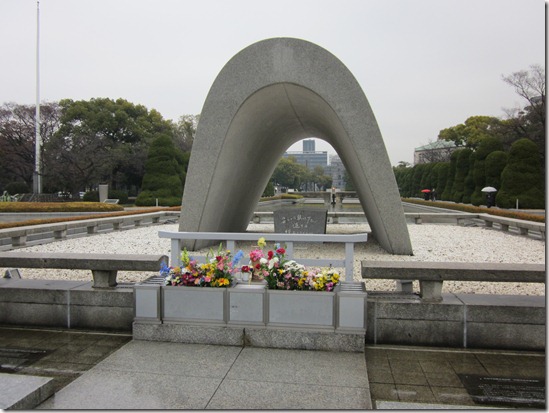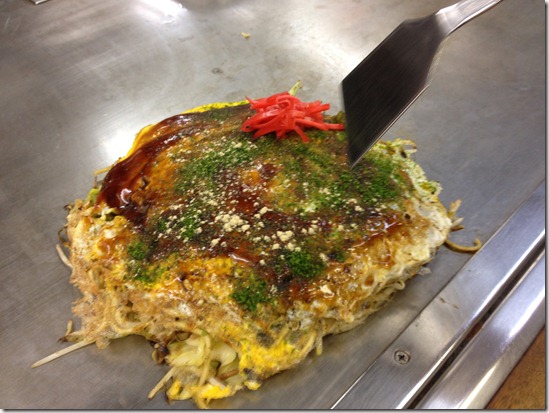As a travel enthusiast, I am often asked why I like to travel so much. I have quite a few short answers to that question but if I sense someone actually wants to hear my long answer I will occasionally include a tragic yet illustrative story about how travel can change the way we think.
The story that resonates most with me about the power of travel focuses on decisions and the underlying rationale made by Henry L. Stimson, the United States Secretary of War during WWII. Stimson took ownership of the atomic bomb project and was driven to see the project succeed. The definition of success is certainly debatable and not important to the theme of this particular story. The story I tell in my words goes something like this.
After it was decided the US would use the atomic bomb on Japan, a committee put together a list of target cities with justifications of each to present to the Secretary of War, Henry Stimson. Number one on the list was the city of Kyoto. Secretary Stimson was presented with the list and immediately instructed the team to remove Kyoto from the list. In official documents Secretary Stimson cited a number of ‘official’ reasons why Kyoto should be taken off the list though interestingly, nearly every cited reason starkly contradicted his previous stances. The real reason Stimson took Kyoto off the list so abruptly was because he had actually been to Kyoto. When he was younger he visited and loved the city so much he later returned for his honeymoon. As a Secretary of War, Stimson was willing to use the destructive device on a city but as a world traveler, Secretary Stimson would not even entertain the idea of using the bomb on a city he had visited enjoyably. Secretary Stimson’s travels had created an emotional connection that overruled his war logic and spared Kyoto.
Admittedly the story I tell was originally concocted from a series of anecdotes I had put together from bits and pieces of media but I had never dug deeper to confirm the story.
This week I returned to Hiroshima and the Hiroshima Peace Museum to research further.
For those who have not been to Hiroshima, I would summarize the city as 1 part sadness and reflection and 3 parts hope and peace. To me, Hiroshima is extremely uplifting and in no ways a negative experience. It also doesn’t hurt they are the mecca for one of my favorite dishes on the planet, Okonomiyaki.
The Peace Museum has a plethora of information including transcripts and meeting minutes from WWII. I focused on the information around the selection of the atomic bomb target cities. I reviewed what I could and concluded the story is mostly true. Stimson did not cite his emotional ties to Kyoto in the formal texts but a review of his dairies and those who were also present suggest his emotional decision to remove Kyoto was immediate and the ‘official’ rationale came much later.
The bottom line
While the story revolves around a terribly tragic event, I believe it illustrates how powerful travel can be to change the way we think. It is far easier to develop negative feelings and preconceived notions towards places you have never been. It is amazing how quickly those feelings melt away after you actually visit.
As a final note, you won’t notice any citations in this post. The point of my research was not to construct an academic argument but rather to confirm that the concept of the story was true. I did not take photos of the transcripts I reviewed at the museum to properly cite my information nor did I continue uncovering facts after I had enough evidence to convince myself the story was genuine.




This is fascinating stuff! It does sound plausible. Kyoto is close to the top of my “must do” travel destinations.
Visited Kyoto last June. Very lovely and pretty city. I would agree with Stimson.
I just finished reading Atomic City: The Untold Story of the Women Who Helped Win World War II by Denise Kiernan. It is about Oak Ridge, TN and the development of the atomic bomb. On page 251, it says, “The General had also favored Kyoto as a target due to its size, believing it to be a significant military target and ideal for determining the impact of the bomb. But the Secretary objected to bombing the cutural and ancient capital, as did the president.” She explains that the General is Gen. Leslie Groves, head of the Manhattan Project, and the Secretary, of course, is Secretary of War Henry Stimson. She gives no further explanation of his reasons beyond the cultural importance of Kyoto, but I’m sure his travels influenced his feelings/opinions. Thanks for sharing this.
The story goes that the German town of Rothenburg ob der Tauber was also saved during WW2 thanks to travel. John J. McCloy was named Protector of Rothenburg as a result of his “recommendation” that Allied troops spare the town of continued bombing or artillery while McCloy was Assistant Secretary of War. According to tours given in Rothenburg, McCloy had grown up with a painting of Rothenburg in his house. The painted had been obtained by his mother while traveling in Germany herself.
Interesting story. On our first trip to Japan about 7 years ago we visited Kyoto for a day on a whim (bullet trains make that possible). We loved the quaint alleyways, shrines and people of the city. Came across a small wedding and the bride and groom were in the alley and they were taking pictures. We asked if we could take one and next thing you know we were in their pictures as well. Absolutely one of our most favorite cities in the world – can’t wait to go back.
I’m going to Tokyo and Kyoto in February!
While this is indeed a great anecdote, I should advise you that I don’t believe it to be entirely factual. I took a class on the Nuclear Age and read many, many documents relating to the decision of where to drop the bombs. Kyoto was actually a top choice by many, but ruled out quickly by Leslie Groves who was a staunch believer in the rules of war, and thus refused to bomb such a historic city. It’s also additionally unlikely that Stimson’s honeymoon affected this decision at all, because Groves hardly listened to his own advisers anyway. If you want more information/sources feel free to e-mail me or respond! Just thought you should know 🙂
@Tanner V – Definitely. pmmalex at gmail.com
The main reason Kyoto was saved is due to the french Professor Serge Elisseeff who had a chat with him and President Truman at the White House.
Kyoto was never seriously considered as a target for the atomic bomb. Yes, it was on the initial list (as was, inexplicably, Niigata) simply because it fit the topographical profile – a target mostly surrounded by hills.
In fact, early on in the war it was decided to not bomb Kyoto, Nara and Kanazawa with any kind of munitions because of their historical and architectural significance. None was a meaningful military target in any sense. There were probably a half dozen Army staff members who were East Asia academics attached to the Japan side of things that helped assure this didn’t happen. In fact, if one goes back to the historical documents, the military really didn’t know anything about Kyoto, classifying it incorrectly as an “industrial” city, which has never been the case throughout it’s history.
“On June 1, 1945, proposals were made to President Harry Truman, Roosevelt’s successor, to use a nuclear bomb against Japan as soon as possible, without warning. Kyōto was among a group of five proposed targets.[7] Elisséeff (Harvard East Asia academic), who had gained a reputation since a 1941 visit to the White House, highlighted the cultural richness of the city and said that this destruction would be a serious obstacle to a subsequent reconciliation with Japan. Although some credited Elisséeff with saving the city, Edwin O. Reischauer, one of Elisséeff’s students, gave a different explanation: “As has been amply proved by my friend Otis Cary of Doshisha in Kyoto, the only person deserving credit for preserving Kyoto from destruction is Henry L. Stimson, the Secretary of War at the time, who had known and admired Kyoto ever since his honeymoon there several decades earlier.”[8] http://en.wikipedia.org/wiki/Serge_Eliss%C3%A9eff
The late Professor Edwin Reischauer was at that time also an East Asia Harvard academic and would be appointed ambassador to Japan by President Kennedy.
Stimson was married in 1893. His first visit to Kyoto was in 1926. Definitely not a honeymoon… maybe a 33rd wedding anniversary…